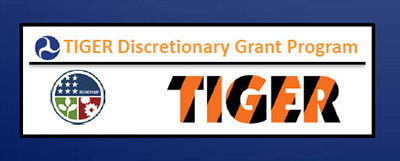TIGER is in danger of becoming extinct
The White House’s budget blueprint, which was released in March, and the House Appropriations Committee’s proposed fiscal year 2018 Transportation, Housing and Urban Development funding bill share a common theme: both clearly state that it’s time to say goodbye to “the tiger.”
The White House’s budget blueprint, which was released in March, and the House Appropriations Committee’s proposed fiscal year 2018 Transportation, Housing and Urban Development funding bill share a common theme: both clearly state that it’s time to say goodbye to “the tiger.”
Make that TIGER actually, the acronym for the Transportation Investment Generating Economic Recover discretionary grant program. The objective of the TIGER program is to ensure that economic funding is made available for transportation infrastructure projects, and that project spending is monitored and transparent.
Since 2009, the TIGER grant program has provided a combined $5.1 billion to 421 projects in all 50 states, the District of Columbia, Puerto Rico, Guam, the Virgin Islands and tribal communities. These federal funds leverage money from private sector partners, states, local governments, metropolitan planning organizations and transit agencies. DOT noted that the 2016 TIGER round alone is leveraged nearly $500 million in federal investment to support $1.74 billion in overall transportation investments.
By cutting TIGER grants, the White House budget proposal would save $499 million from the 2017 annualized continuing resolution level, according to the language in the budget. It added that the DOT’s National Significant Freight and Highway Projects grant program, which is authorized by the FAST Act, supports larger highway and multi-modal freight projects with significant national and regional benefits and is authorized at an annual average of $900 million through 2020.
Like the White House budget, TIGER is also absent from the $56.5 billion House Appropriations Committee bill. While TIGER is not included in the bill’s language, the bill allocates $54.5 billion from the Highway Trust Fund to be spent on the Federal-aid highways program, which it said mirrors authorized levels and provides growth and improvements within America’s highway system.
To be sure, it’s clear by these actions that TIGER was not the panacea Washington needed to fund infrastructure projects. At the same time, we have to take into account the fragmented and fragile state of the country’s transportation network in terms of the lack of available funding, coupled with the U.S. regularly not making the cut overall as evidenced by the failing grades it received from the American Society of Civil Engineers.
While it looks like TIGER funding may very well become extinct, that doesn’t mean that key transportation players frowned upon it. Take DOT Secretary Elaine Chao, for example.
A March report in The Hill said that Chao expressed support for the TIGER Grants and the Transportation Infrastructure Finance and Innovation Act program during her confirmation hearing, while Sen. Bill Nelson (D-Fla.) said in the report that the TIGER grants are essential to rehabbing U.S. infrastructure.
“The elimination of this program would
return DOT and the States to the former, rigid
funding structure that jeopardizes innovative
transportation projects that build for the future”
A Washington-based transportation infrastructure policy expert told LM earlier this year that one of the unique aspects of the TIGER program is that it—unlike existing discretionary and formula funding at DOT—allows local governments to compete on an equal footing with states for critical infrastructure projects.
“All of these attributes have made the TIGER program extremely popular with members of Congress,” she said. “The elimination of this program would return DOT and the States to the former, rigid funding structure that jeopardizes innovative transportation projects that build for the future.”
The Coalition of America’s Gateways and Trade Corridors (CAGTC) called the removal of TIGER a very damaging cut in the DOT budget.
“Discretionary competitive grants like TIGER are one of the most effective tools we have for leveraging federal dollars for infrastructure projects,” said CAGTC executive director Leslie Blakey. “Research has shown that by advantaging proposals that present an innovative finance package for a project, we create an incentive for project sponsors to reduce their dependence on federal funding and encourage more use of private capital as funding partners.”
At a time when there’s a lot of talk coming out of Washington about the need for increased infrastructure development, funding remains an issue—and nothing has really changed. All the while, Congress and the White House continue to talk a good game, but sit tight on the sidelines. It’s time to change the playbook before time runs off the clock.













